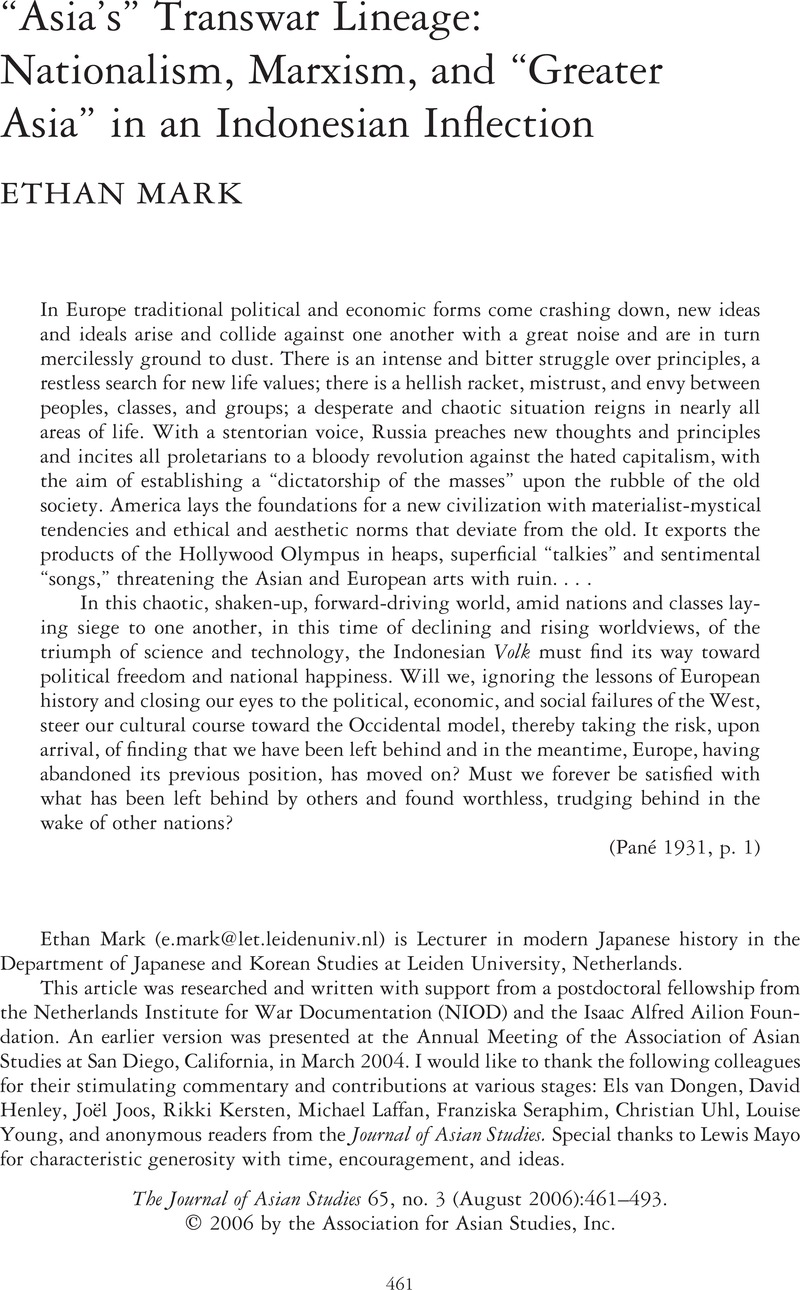Crossref Citations
This article has been cited by the following publications. This list is generated based on data provided by Crossref.
MARK, E.
2008.
Pan-Asianism in Modern Japanese History: Colonialism, Regionalism, and Borders.
Social Science Japan Journal,
Vol. 11,
Issue. 1,
p.
136.
Oakes, T.
2009.
International Encyclopedia of Human Geography.
p.
214.
Stolte, Carolien
2012.
Bringing Asia to the world: Indian trade unionism and the long road towards the Asiatic Labour Congress, 1919–37.
Journal of Global History,
Vol. 7,
Issue. 2,
p.
257.
Barker, Thomas
2017.
Colonial Mobility and Ambiguity: The Life of Filmmaker Hinatsu/Huyung.
TRaNS: Trans -Regional and -National Studies of Southeast Asia,
Vol. 5,
Issue. 2,
p.
197.
Gellert, Paul K.
2019.
Neoliberalism and altered state developmentalism in the twenty-first century extractive regime of Indonesia.
Globalizations,
Vol. 16,
Issue. 6,
p.
894.
Bloembergen, Marieke
and
Eickhoff, Martijn
2020.
The Politics of Heritage in Indonesia.





